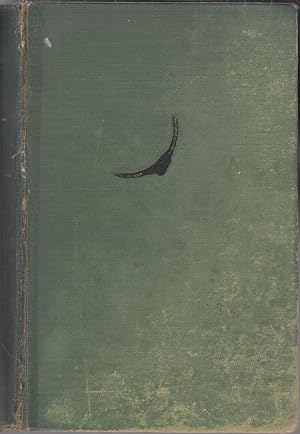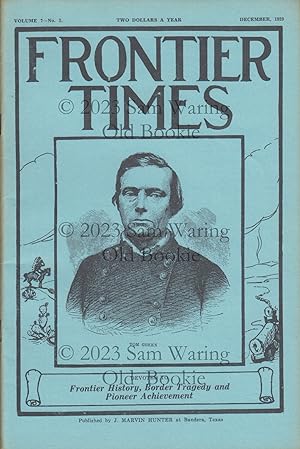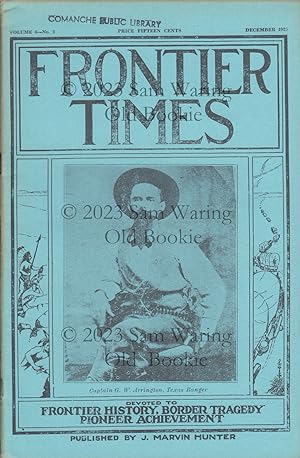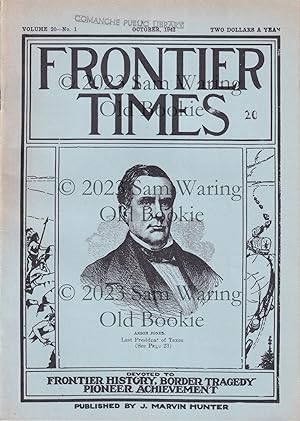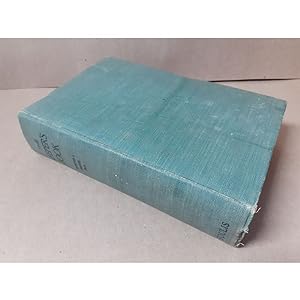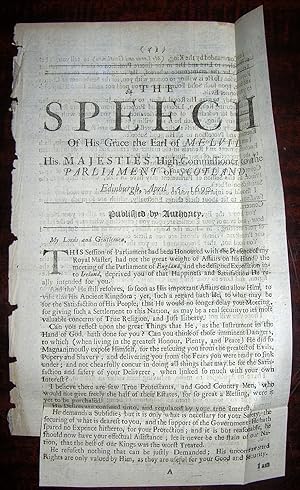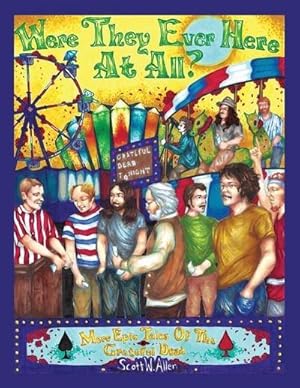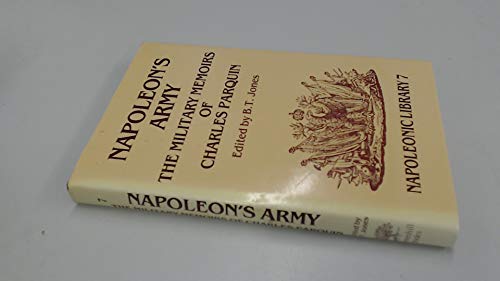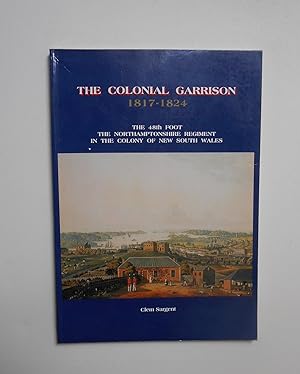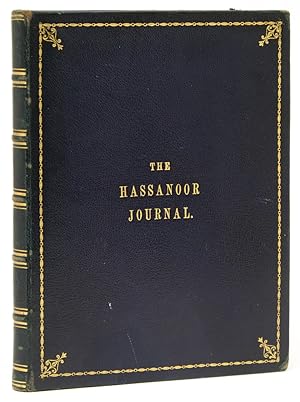September First by Hunter S Jones (17 results)
Product Type
- All Product Types
- Books (13)
- Magazines & Periodicals (4)
- Comics
- Sheet Music
- Art, Prints & Posters
- Photographs
- Maps
-
Manuscripts &
Paper Collectibles
Condition
Binding
Collectible Attributes
Free Shipping
Seller Location
Seller Rating
-
Ellery Queen Mystery Magazine September 1993
Published by Dell Magazine, New York, 1993
Seller: Scene of the Crime, ABAC, IOBA, St. Catharines, ON, Canada
Magazine / Periodical First Edition
Soft cover. Condition: Near Fine. 1st Edition. First Edition, First Printing of this Collection of 15 Short Stories. Featured are: The Stranger by Michael Z Lewin, Stolen Goods by Donald Olson, Smiling Joe and the Twins by Florence V Mayberry, A Distant Affray by Roger Ormerod, Survivor by Suzanne Jones, The Jury Box by Jon L Breen, The Shaft by Marianne Strong, Face Value by Jo Bannister, The Mystery Crossword by Ruth Minary, Continuation of the Parks by Julio Cortazar, No Vivaldi by Edward Clinton, A Keyhole in Time by James Powell, The Passion of Lizzie B by Edward D Hoch, The Hunter by Blanche Boshinski and Second Honeymoon by Ian Stuart. Uneven tanning to the rear cover. In Near Fine Condition.
-
The Trotting Horse In America
Published by Harper & Brothers, NY, 1873
Seller: Legacy Books II, Louisville, KY, U.S.A.
Book
Soft cover. Condition: VG. 10pp extract, printed in double columns, salvaged from a damaged issue of Harper's New Monthly Magazine, Volume XLVII, No. 280, September, 1873. The history and present state of trotting-horse breeding and racing. Includes the family tree of Rysdyk's Hambletonian with horses Abdallah, Charles Kent Mare, Mambrino, Amazonia, Messenger, Imp. Bell - founder, One Eye, Sauerkraut, Hambletonian, Whirligig, and Miss Slamerkin. Other horses include Top - gallant, Paul Pry, Whalebone, Lady Blanch, Dexter, True Briton, or Beautiful Bay, owned by Sealy Norton of East Hartford, Connecticut, Traveler, Diamond, Pocahontas by Ethan Allen, Mr. Dorsey's Gold - Dust, Grand Bashaw, Pearl by First Consul, Fancy, Young Bashaw, Andrew Jackson, Green's Bashaw, Vernol's Black Hawk, Long Island Black Hawk, Bashaw Junior, Pilot Junior, Nancy Pope by Havoc, Tippoo of the Royal Georges, Screw - driver, Betsy Baker, Lady Washington, Sally Miller, Dutchman, Awful, Lady Suffolk, Goldsmith Maid, Washington, Confidence, Ripton, Cayuga Chief, Independence, Beppo, Oneida Chief, Lady Moscow, Americus, Trustee, Tacony, Flora Temple, One-eyed Kentucky Hunter, Madame Temple, Commodore, Huntress, Prospero, Startle, Joe Elliott, etc., etc. Persons include breeder John Pratt, of Newmarket, Suffolk, England, Joseph Cairn Simpson, Jonas Seeley, Jr., of Chester, Orange County, New York, William Rysdyk, Justin Morgan and the Morgan family, of Massachusetts and Randolph, Vermont, Major William Jones, of Long Island, and Colonel Bond, of Maryland, William Henry Herbert, jockey Dan Mace, Mr. Velie, George E. Perrin, Robert Bonner, Jonas Hawkins, Orange County, NY, George Hall, W. M. Parks, James Bach, Alden Goldsmith, Henry N. Smith. Associations and tracks include the New York Association for the Improvement of the Breed of Horses, founded in 1823, the Union Course, Long Island, the New York Trotting Club, the Hunting Park Association, Philadelphia, Beacon Course, New Jersey, Fashion Stud Farm, Trenton, Trainers and Drivers Protective Association, etc. Housed in protective mylar report cover.
-
THE KEEPER'S BOOK: A GUIDE TO THE DUTIES OF A GAMEKEEPER. By Sir Peter Jeffrey Mackie, Bart.
Published by T.N. Foulis. London & Edinburgh. 1907., 1907
Seller: Coch-y-Bonddu Books Ltd, MACHYNLLETH, United Kingdom
Association Member: PBFA
Condition: new. (Hardcover, 1907). (1903) 1929 16th edition. 8vo (144 x 221mm). Ppxii,595. Tipped-in colour frontispiece of the author, tipped-in colour illustrations. Binding B, plain green cloth, spine titled in black. Stained and used, paste repair to spine. A working copy only. "With a new introduction and a special chapter on sporting guns by Major Hugh Pollard, Sporting Editor of Country Life." This is a detailed account of what the gamekeeper and his profession should look like, from the point of view of the master of the house. "This book is written for 'the good keeper who knows his work, and for the bad one who does not.'" "Even taking the master on the highest plane, he can never be more than a very good amateur. The keeper is a specialist. Within the limits of his duties, a keeper should know all that is to be known, and in the majority of cases should know infinitely more than his master. This ideal can only be reached if a keeper bases his knowledge and his work on the possibility of his master being an absolute ignoramus on all matters, not even excepting the handling of a gun." More generally, Mackie observes, there is in "[ball] games a competitive or a team play spirit which, admirable in itself, is something apart from the essential quality of real sport. We must not be led to confuse the narrower and more specialised outlook and training of the athlete with the very much higher craft of the hunter. The one is an accomplishment, the other in a much wider sense a liberal education." Other contributers given on the title-page are: Lord Malise Graham, Captain H. Shaw Kennedy, Dr Charles Reid, H. Burn Murdoch, P.D. Malloch, Henry Lamond, Tom Speedy, Dr Arnold Jones. This edition gives a printing history on the half-title verso, presumably just for the Foulis editions: First edition, January 1904; Reprints, February 1904, April 1904; Revised and enlarged, August 1906; Reprints, August 1906, June 1909; Enlarged and rewritten, August 1910; Reprints, September 1910, June 1911, July 1911; Enlarged and rewritten, October 1911; Revised, rewritten, and enlarged, October 1917; Reprints, November 1917, December 1917; Revised and rewritten, October 1924; Reprint, November 1924; Revised and enlarged, January 1929. That gives 16 issues not counting the first edition. The Preface is headed "Preface to the 16th Edition," and the title-page verso states "Published January, nineteen hundred and twenty - nine." .
-
Townsend Hoopes Arms Control
Published by University Press of America, Lanhamn, MD, 1987
ISBN 10: 0819166227ISBN 13: 9780819166227
Seller: Ground Zero Books, Ltd., Silver Spring, MD, U.S.A.
Book First Edition
Trade paperback. Condition: Good. ix, [1], 127, [7] p This is the fourth volume of the W. Alton Jones Foundation Series on Arms Control. From Wikipedia: "Townsend Walter Hoopes II (April 28, 1922 September 20, 2004) was an American historian, who reached the height of his career as Under Secretary of the Air Force from 1967 to 1969. Hoopes, known as Tim, was born in Duluth, Minnesota. He graduated from Phillips Academy, before attending Yale University, where he became a member of the Skull and Bones society and captain of the football team, graduating in 1944. Later he would graduate from the National War College as well. He married twice. His first marriage to Marion Schmidt ended in divorce. They had two sons together: Townsend Walter Hoopes III and Peter Schmidt Hoopes. His second marriage to Ann Merrifield lasted 40 years until his death. They had a daughter together: Andrea Hoopes DeGirolamo. He also had four stepchildren: Lise Jeantet, Cecily Hoopes Lyons, Briggs Swift Cunningham IV, and F. Thomas B.C. Hoopes. Additionally, he had 11 grandchildren including a grandson bearing his name, Hunter Townsend Hoopes. During World War II, he served as a Marine Lieutenant in the Pacific theater of the war, participating in the U.S. 5th Marine Division capture of Iwo Jima and the initial occupation of Japan. Afterwards, he became assistant to the chairman of the House Armed Services Committee from 1947 to 1948. He continued as staff aide to three Secretaries of Defense: James Forrestal, General George Marshall and Robert A. Lovett from 1948 to 1953. He then went on to work in the private sector for a number of years, spending 7 years as partner of an international consulting firm: Cresap, McCormick and Paget. In 1964, he returned to public service as Deputy Assistant Secretary of Defense for International affairs. From 1965 to 1967, he was Principal Deputy for International Security Affairs at the Pentagon. Serving as Under Secretary of the Air Force at the Pentagon from 1967 to 1969, he witnessed firsthand the effect of the 1968 Tet Offensive, and Lyndon B. Johnson's subsequent decision to de-escalate the war in Vietnam. After leaving the government, he became fellow at the Woodrow Wilson International Center for Scholars for two years. From 1973 to 1986, Hoopes became president of the Association of American Publishers. He also became co-chairman of Americans for SALT, director of the American Committee on U.S. Soviet Relations, and a distinguished international executive at the University of Maryland, College Park. In 2002, he became senior fellow of Washington College." Presumed first paperback edition/first printing.
-
Frontier Times volume 7 : October, 1929 through September, 1930
Published by J. Marvin Hunter, Bandera, TX, 1930
Seller: Old Bookie, Austin, TX, U.S.A.
Magazine / Periodical
Saddle Stitched. Condition: VG. No Jacket. 12 issues. illustrations, 28 cm ; stapled ; wraps. Ex-library copies; library ownership stamp on front wrap of each issue. Extremities lightly browned. Pages are browning, cheap, soft newsprint. Each month's cover portrait is profiled in the issue: No. 1: Anson Jones. ? No. 2: Mirabeau B. Lamar. ? No. 3: Tom Green. ? No. 4: Ellis P. Bean. ? No. 5: Sterling C. Robertson. ? No. 6: Sidney Sherman. ? No. 7: Ben Milam. ? No. 8: Albert Sidney Johnston. ? No. 9: Elisha M. Pease. ? No. 10: James Stephen Hogg. ? No. 11: Edmund J. Davis. ? No. 12: Richard Coke. This is a FACSIMILE of the seventh year's worth of issues from the legendary magazine covering the Old West and specializing in frontier Texas. Between 1923 and 1954, J. Marvin Hunter gathered, edited, and published material from hundreds of contributors, many of whom were actual participants in the historic events they recounted. Long runs of the magazine's very first years are locked up in libraries' climate-controlled vaults, but reprints were issued for a short time in the 1980s, and that is the source of this volume.
-
Frontier Times Volume 6 : October, 1928 through September, 1929
Published by J. Marvin Hunter, Bandera, TX, 1929
Seller: Old Bookie, Austin, TX, U.S.A.
Magazine / Periodical
Staple Binding. Condition: VG. No Jacket. 12 issues. illus, 28 cm ; stapled ; wraps. Ex-library copies; library ownership stamp on front wrap of each issue. No other apparatus. Extrems lightly browned. Pages are browning, cheap, soft newsprint. The magazine covers subjects both large and small related to pre-20th century Texas, from personal memoirs to semi-scholarly articles. This is a FACSIMILE of the sixth year's worth of issues from the legendary magazine covering the Old West and specializing in frontier Texas. Between 1923 and 1954, J. Marvin Hunter gathered, edited, and published material from hundreds of contributors, many of whom were actual participants in the historic events they recounted. Long runs of the magazine's very first years are locked up in libraries' climate-controlled vaults, but reprints were issued for a short time in the 1980s, and that is the source of this volume. Each month's cover portrait is profiled in the issue: No. 1: Maj. James M. Hunter. ? No. 2: James E. Ranck. ? No. 3: Capt. G. W. Arrington. ? No. 4: Capt. Frank Jones. ? No. 5: Benjamin Franklin Gholson. ? No. 6: Big-Foot Wallace. ? No. 7: Vernon Coke Wilson. ? No. 8: Davy Crockett. ? No. 9: Edward Burleson. ? No. 10: David G. Burnet. ? No. 11: Stephen F. Austin. ? No. 12: Thomas J. Rusk.
-
Frontier Times volume 20 : October, 1942 through September, 1943
Published by J. Marvin Hunter, Bandera, TX, 1943
Seller: Old Bookie, Austin, TX, U.S.A.
Magazine / Periodical
Saddle Stitched. Condition: VG. No Jacket. Gorsline, Douglas W. (illustrator). Ex-Library. 12 issues. 280 pages: illustrations, 28 cm ; stapled ; wraps. Ex-library copies; library ownership stamp on front wrap of each issue. Extremities lightly browned. Pages are browning, cheap, soft newsprint. Each month's cover portrait is profiled in the issue: No. 1: Anson Jones. -- No. 2: Mirabeau B. Lamar. -- No. 3: Thomas J. Rusk. -- No. 4: Capt. Andrew Anderson. -- No. 5: Sidney Sherman. -- No. 6: Grandma Mattie Jones. -- No. 7: Dr. Travis M. Harrell. -- No. 8: Ten Dollar Hoss and Forty Dollar Saddle. -- No. 9: Captain Ira Aten. -- No. 10: Winston Churchill. -- No. 11: W. C. Moore. -- No. 12: Andrew J. Sowell. This is a FACSIMILE of the nineteenth year's worth of issues from the legendary magazine covering the Old West and specializing in frontier Texas. Between 1923 and 1954, J. Marvin Hunter gathered, edited, and published material from hundreds of contributors, many of whom were actual participants in the historic events they recounted. Long runs of the magazine's very first years are locked up in libraries' climate-controlled vaults, but reprints were issued for a short time in the 1980s, and that is the source of this volume.
-
THE KEEPER'S BOOK: A GUIDE TO THE DUTIES OF A GAMEKEEPER. By Sir Peter Jeffrey Mackie, Bart.
Published by T.N. Foulis. London & Edinburgh. 1929., 1929
Seller: Coch-y-Bonddu Books Ltd, MACHYNLLETH, United Kingdom
Association Member: PBFA
Condition: new. (Hardcover, 1907). (1903) 1929 16th edition. 8vo (144 x 222mm). Ppxii,595. Tipped-in colour frontispiece of the author, tipped-in colour illustrations. Binding B, plain green cloth, spine titled in black. Boards slightly dented and stained, browning to end-papers and edges. Good-plus. "With a new introduction and a special chapter on sporting guns by Major Hugh Pollard, Sporting Editor of Country Life." This is a detailed account of what the gamekeeper and his profession should look like, from the point of view of the master of the house. "This book is written for 'the good keeper who knows his work, and for the bad one who does not.'" "Even taking the master on the highest plane, he can never be more than a very good amateur. The keeper is a specialist. Within the limits of his duties, a keeper should know all that is to be known, and in the majority of cases should know infinitely more than his master. This ideal can only be reached if a keeper bases his knowledge and his work on the possibility of his master being an absolute ignoramus on all matters, not even excepting the handling of a gun." More generally, Mackie observes, there is in "[ball] games a competitive or a team play spirit which, admirable in itself, is something apart from the essential quality of real sport. We must not be led to confuse the narrower and more specialised outlook and training of the athlete with the very much higher craft of the hunter. The one is an accomplishment, the other in a much wider sense a liberal education." Other contributers given on the title-page are: Lord Malise Graham, Captain H. Shaw Kennedy, Dr Charles Reid, H. Burn Murdoch, P.D. Malloch, Henry Lamond, Tom Speedy, Dr Arnold Jones. This edition gives a printing history on the half-title verso, presumably just for the Foulis editions: First edition, January 1904; Reprints, February 1904, April 1904; Revised and enlarged, August 1906; Reprints, August 1906, June 1909; Enlarged and rewritten, August 1910; Reprints, September 1910, June 1911, July 1911; Enlarged and rewritten, October 1911; Revised, rewritten, and enlarged, October 1917; Reprints, November 1917, December 1917; Revised and rewritten, October 1924; Reprint, November 1924; Revised and enlarged, January 1929. That gives 16 issues not counting the first edition. The Preface is headed "Preface to the 16th Edition," and the title-page verso states "Published January, nineteen hundred and twenty - nine." This edition gives the title's publishing history so; First edition, January 1904; Reprint, February 1904; Reprint, April 1904; Revised and enlarged, August 1906; Reprint, August 1906; Reprint, June 1909; Enlarged and rewritten, August 1910; Reprint, September 1910; Reprint, June 1911; Reprint, July 1911; Enlarged and rewritten, October 1911; Revised, rewritten, and enlarged, October 1917; Reprint, November 1917; Reprint, December 1917; Revised and rewritten, October 1924; Reprint, November 1924; Revised and enlarged, January 1929. .
-
The Speech Of His Grace the Earl of Melvil, His Majesties High-Commissioner to the Parliament of Scotland, Edinburgh, April 15, 1690.
Published by Printed by Edward Jones in the Savoy, 1690., 1690
Seller: Arader Galleries - AraderNYC, New York, NY, U.S.A.
MELVILLE, George Melville, Earl of (1636 1707). The Speech Of His Grace the Earl of Melvil, His Majesties High-Commissioner to the Parliament of Scotland, Edinburgh, April 15, 1690. Printed by Edward Jones in the Savoy, 1690. Single sheet (12 x 7 inches), printed on both sides (disbound, folded). Second edition. Originally published in Edinburgh as: "The speech of His Grace George Earl of Melvill, Their Majesties high commissioner; at the opening of the second session of the first Parliament of Their Majesties antient kingdom of Scotland. The 15th of April, 1690" Melville was in London when "William and Mary were crowned as king and queen of Scotland. On 13 May 1689 he was appointed sole secretary of state for Scotland, securing the position from his rival Sir James Montgomerie of Skelmorlie, a militant presbyterian and the leader of the Club . Melville's moderate presbyterianism appears to have satisfied episcopalians, who were wary of Montgomerie's more militant stance. He took the oath at Hampton Court on 23 September 1689. On 21 January 1690 Melville was named as an exchequer commissioner in Scotland, and on 26 February he was appointed high commissioner to the forthcoming second session of William's and Mary's parliament in Scotland. Returning to Edinburgh between 8 March and 10 March 1690, he first attended the privy council on 10 March. On 8 April 1690 he was created earl of Melville, viscount of Kirkcaldy, and Lord Raith, Monymail, and Balwearie. "Melville continued as a high commissioner in the second session of the Williamite parliament in Scotland, apparently to the satisfaction of both people and king. His speech to the assembled estates on 15 April 1690 [as here] referred to William as the Instrument in the Hand of God who did so magnanimously expose Himself for the Rescuing you from the greatest of evils, Popery and Slavery; and Delivering you from the Fears you were ready to sink under and expressed his own intire Faithfulness to the King my Master, a sincere respect to you, and a zealous application for promoting of the true Religion, and Common good of all (APS, 9, appx, 38). The strident demands of the Club for constitutional reform and a presbyterian church made the securing of a settlement for the king difficult, but Melville presided over the abolition of the controversial lords of the articles (8 May) and the legislation re-establishing presbyterian church government of the church of Scotland (7 June). Legislation passed in July rescinding forfeitures and fines resulted in Melville, among others, receiving back his land and estates. However, King William was displeased at the Scottish religious settlement with its concentration of power in the hands of a militant minority of presbyterian ministers and its failure to grant liberty to conscience. Although Melville had probably done the best he could, given the atmosphere in the Edinburgh parliament, his position was weakened, especially at the English court. None the less, he continued as secretary of state and he was high commissioner to the short parliamentary session of 3 10 September 1690" (John R. Young for DNB). ESTC R16337. Catalogued by Kate Hunter.
-
Camden County Music Fair Haddonfield, N.J. 1962 Season Presenting Red Buttons in "The Tender Trap"
Published by Kamens Printing, Philadelphia, 1962
Seller: Ground Zero Books, Ltd., Silver Spring, MD, U.S.A.
First Edition
Wraps. Condition: Good. Format is approximately 6 inches by 9 inches. 16 pages, including covers. Illustrations (black and white only). The Tender Trap was a 1954 Broadway play by Max Shulman and Robert Paul Smith starring Robert Preston, Ronny Graham, Kim Hunter and Joey Faye. It made its debut at the Longacre Theatre on October 13, 1954 and closed on January 8, 1955 after 102 performances. The story: Charlie Reader is a young bachelor in New York who's living the ideal life. Or so it seems to Joe McCall, an old friend of his from Indianapolis. Charlie has an elegant apartment, a good job, and millions of girls‚ "all eager to bring him food, tidy up his apartment and fall in with his every wish. The play was filmed in 1955 in a movie adaptation starring Frank Sinatra. The program includes Who's Who in the Cast (Red Buttons was the star along with Lee Grant and Murray Hamilton), Program page with major cast and crew listed, Cast of Characters in order of appearance, Synopsis of Scenes, and Camden County Music Fair administrative and production staff and program credits. There are local advertisements throughout. A resident recalled that in 1957 the facility was known as the Camden County Music Circus. In approximately 1959 it was taken over by the Guber, Ford and Gross organization and renamed the Camden County Music Fair. The Camden County Music Fair was held at an outdoor amphitheatre "in-the-round" from May thru Sept. every year. First opened in 1961(?). It was under a large 3-pole tent providing seating for approx. 2000 people per show. Hosted Broadway shows, musicals, and rock groups. Red Buttons (born Aaron Chwatt; February 5, 1919 - July 13, 2006) was an American actor and comedian. He won an Oscar and a Golden Globe for his supporting role in the 1957 film Sayonara. He was nominated for awards for his acting work in films such as They Shoot Horses, Don't They?, Harlow, and Pete's Dragon. Buttons played the lead role of Private John Steele in the 1962 international ensemble cast film The Longest Day. At sixteen years old, Chwatt got a job as an entertaining bellhop at Ryan's Tavern in City Island, the Bronx, New York City. The combination of his red hair and the large, shiny buttons on the bellhop uniforms inspired orchestra leader Charles "Dinty" Moore to call him "Red Buttons," the name under which he would later perform. Later that same summer, Buttons worked on the Borscht Belt;[1] his straight man was Robert Alda. In 1942, Buttons appeared in the Minsky's show Wine, Women and Song. This was the last classic Burlesque show in New York City history, as the Mayor La Guardia administration closed it down. Buttons was on stage when the show was raided. Lee Grant (born Lyova Haskell Rosenthal; October 31, during the mid-1920s) is an American actress, documentarian, and director. She made her film debut in 1951 as a young shoplifter in William Wyler's Detective Story, co-starring Kirk Douglas and Eleanor Parker. This role earned her an Oscar nomination for Best Supporting Actress as well as the Best Actress Award at the 1952 Cannes Film Festival. In 1952, she was blacklisted from most acting jobs for the next 12 years. Grant was able to find only occasional work onstage or as a teacher during this period. It also contributed to her divorce. During this time, Grant appeared in plays on stage. She was removed from the blacklist in 1963 and started to rebuild her on-screen acting career. She starred in 71 TV episodes of Peyton Place (1965-1966), followed by lead roles in films such as Valley of the Dolls and In the Heat of the Night in 1967, as well as Shampoo (1975), for which she won an Oscar. In 1964, she won the Obie Award for Distinguished Performance by an Actress for her performance in The Maids. During her career she was nominated for the Emmy Award seven times between 1966 and 1993, winning twice. In 1986 she directed the documentary Down and Out in America which tied for the Academy Award for Best Documentary Feature, and in the same year she also won a Directors Guild of America Award for Nobody's Child. Grant appeared in a number of plays and in a few small television roles during her blacklisted years. In 1953, she played Rose Peabody in the soap opera Search for Tomorrow. On stage, Grant starred in the Broadway production of Two for the Seesaw in 1959, she succeeded Anne Bancroft in the lead female role. That same year, she had a supporting role in the romantic drama Middle of the Night. Murray Hamilton (March 24, 1923 - September 1, 1986) was an American stage, screen, and television character actor who appeared in such films as Anatomy of a Murder, The Hustler, The Graduate, The Amityville Horror and Jaws. For many years both before and during his film career, Hamilton was a prominent dramatic stage actor, earning a Tony Award nomination for his role in the 1965 production of Absence of a Cello. New York Times theater critic Brooks Atkinson praised his work in the play Stockade, which was based on a part of the James Jones novel From Here to Eternity: "Murray Hamilton is an ideal Prewitt. Modest in manner, pleasant of voice, he has a steel-like spirit that brings Prewitt honestly to life." When the actor was suffering from cancer and found film roles harder to come by, his old co-star George C. Scott helped out by getting him a part in the made-for-television movie The Last Days of Patton (1986). Presumed First Edition, First printing thus.
-
Were They Ever Here at All? More Epic Tales of the Grateful Dead
Published by Outskirts Press, 2022
ISBN 10: 1977248500ISBN 13: 9781977248503
Seller: AHA-BUCH GmbH, Einbeck, Germany
Book Print on Demand
Taschenbuch. Condition: Neu. nach der Bestellung gedruckt Neuware - Printed after ordering - Were They Ever Here at All More Epic Tales of the Grateful Dead is author Scott W. Allen's third and final installment in his written histories of the revered San Francisco group, updating the Dead's history through August 2022. Mr. Allen's series of biographies are the most accurate, in-depth, and current histories of the Dead ever written.The Foreword to Were They Ever Here at All More Epic Tales of the Grateful Dead was penned by the late Grateful Dead lyricist John Barlow.Were They Ever Here at All is a positive exploration of the band's history. Included are essays that delve into Grateful Dead songs such as 'William Tell,' 'Ramble on Rose' and 'Terrapin Station.' The mysterious death of Neal Cassady in February 1968 is examined in never-before-told detail. The meteoric ascension of Dead & Company during the period 2015-22 is also charted.There are stories that chronicle the rise of the Mime Troupe, and the creation of new off-shoot groups such as Wolf Bros, the Phil & Bob duo, and the Bill Kreutzmann and Billy Strings band. A dozen legendary Grateful Dead shows are explored, among them: February 14, 1968; August 16, 1969 (Woodstock); September 2, 1978 (Englishtown); April 22, 1979 (Brent's debut), and June 18, 1992.In his new tome, Scott has penned touching eulogies to Robert Hunter, John Barlow, Gloria Jones (JGB), Deadhead Adam Katz, and a South Bronx teacher and Deadhead named Lew Kirsch who passed away in 2020 from the coronavirus.Readers will also find stories that deepen and grow the legacies of Bill Graham; Wavy Gravy; Robert Hunter; Vince Welnick; Brent Mydland; Bill Walton; Merry Prankster Joe McCord, Jerry, and Billy.There are loving tributes to tape archivist Dick Latvala, lighting director Candace Brightman, Merry Prankster Joe McCord, Betty-Cantor-Jackson, the Jerry Garcia Band, Steve Parish, Ram Rod Shurtliff, Owsley, and Dan Healy.Were They Ever Here at All also focuses on the last five years of Jerry's life.'I have followed Scott during his time at Relix, and on social media, for years now. His insights and stories about the Grateful Dead are always informative and enjoyable to read. He holds a wealth of knowledge about the band, its members, and the Deadhead community.'I loved his first two books, and they would be a welcome addition to anyone's Dead library. I just finished this one, and I think it's my favorite of the three !'This book is a wonderful mix of history and personal tales that will take you right back to the good old days.' Rob Campbell, Deadhead, Jackson, MI.
-
Napoleon's Army; The Military Memoirs of Charles Parquin
Published by Greenhill Books, London, England, 1989
ISBN 10: 0947898778ISBN 13: 9780947898779
Seller: Ground Zero Books, Ltd., Silver Spring, MD, U.S.A.
Book
Hardcover. Condition: Very good. Dust Jacket Condition: Very good. Reprinted Edition. xxii, 200, [2] pages. Footnotes. Includes Introduction; Acknowledgments; Chronological Table, Parquin's Career 1803-14; Memoirs; Appendix 1: The Chasseur a cheval Regiment; Appendix II: La Legion d'honneur; Biographical Notes; Select Bibliography; Index. Also contains black and white frontis illustration of Charles Parquin, as well as three black and white maps: The Baltic Coast and Eastern Russia; Spain and Portugal; and Eastern France. Comparatively few memoirs of the Napoleonic period from the French side have been published in English. These memoirs of an officer in Napoleon's army provide a fascinating picture of that army in action in victory and defeat--at Eylau and Jena, at Wagram, in the Peninsula and at Leipzig; of the army's organization and morale; and of the life and views of the class from which the writer came, the bourgeoisie. The gripping memoirs of a cavalry officer of the First Empire This is the story of a remarkable French cavalryman of the Napoleonic era, Denis Charles Parquin, an officer of the Chasseurs a Cheval. Memoirs of soldiers of Napoleon's army are always exciting, but few exist in English translation. La Grande Arm√ e was the imperial army commanded by Napoleon Bonaparte during the Napoleonic Wars. From 1804 to 1809, it won a series of military victories that allowed the French Empire to exercise unprecedented control over most of Europe. Widely acknowledged to be one of the greatest fighting forces ever assembled, it suffered terrible losses during the disastrous French invasion of Russia in 1812, after which it never recovered its tactical superiority. On January 1, 1803, when he was only sixteen years old, Charles Parquin joined the 20th Horse Hunters Regiment,where he remained until 1813. He was awarded the rank of brigadier on 25 October before being appointed a furrier on May 1, 18061. That same year, he fought in Saalfeld and Jena. On February 8, 1807,during the Battle of Eylau,he was wounded by a shot and five spears and then taken prisoner. After a few months of captivity in Russia, he joined his regiment. Promoted Marshal of the House on February 2, 1809 then second lieutenant on April 30, 19911, he took part in the Battle of Wagram where, on 2 July 1809,he was wounded by a gunshot wound to the left arm. On May 5, 1811,Second Lieutenant Parquin was shot in the face at the Battle of Ciudad Rodrigo. In Guarda, under the command of Commander Denys de Damr√ mont,he took part in a charge that removed five flags from the Portuguese and allowed the capture of 1,500 prisoners. On July 22, 1812,during the Battle of Salamanca,he was wounded with a sword in his right wrist, which prevents him from using his arm until the end of the Spanish campaign. Lieutenant at the 13th Fighter Regiment since February 27, 1813, Parquin agreed to be demoted second lieutenant to join the 1st Guard Horse Hunters Regiment on March 10, 18131. Noticed by the Emperor during a review at the Tuileries, he was made a Knight of the Legion of Honour on April 6, 1813. A few days after protecting Marshal Oudinot during the Battle of Leipzig, he was wounded by a bayonet in the face during an engagement against the Bavarian infantry at the Battle of Hanau on September 29, 18131. However, he continued his service and on 21 December, he was appointed captain of the 2nd Horse Hunter Regiment of the Guard. During the campaign of France (1814) he distinguished himself by taking over Oulchy-le-Ch√Ęteau, where, without suffering any losses, he took a hundred prisoners (2-3March) and, a few days later, overloading 18 Russian artillery pieces to Saint-Dizier. Appointed by king's patent to the 11th Regiment of Cuirassiers on June 19, 1814, Parquin probably took part in the Battle of Waterloo, although his service records, written under the Second Restoration, do not speak of it. After the war, he retained his rank as captain by moving to the Cantal Hunters Regiment on May 25, 1815.
-
The Tender Trap
Published by Philip Trachtman, Theatrical Publications, Philadelphia, PA, 1962
Seller: Ground Zero Books, Ltd., Silver Spring, MD, U.S.A.
First Edition
Wraps. Condition: Good. Philip Trachtman (illustrator). 12 pages, plus covers. Illustrations (some color inside). This production was directed by James Hammerstein. A rare item of Red Buttons' and Lee Grant's stage and musical careers. This may be their only joint appearance. The Tender Trap was a 1954 Broadway play by Max Shulman and Robert Paul Smith starring Robert Preston, Ronny Graham, Kim Hunter and Joey Faye. It made its debut at the Longacre Theatre on October 13, 1954 and closed on January 8, 1955 after 102 performances. The story: Charlie Reader is a young bachelor in New York who's living the ideal life. Or so it seems to Joe McCall, an old friend of his from Indianapolis. Charlie has an elegant apartment, a good job, and millions of girls‚ "all eager to bring him food, tidy up his apartment and fall in with his every wish. The play was filmed in 1955 in a movie adaptation starring Frank Sinatra. This program includes a narrative on Red Buttons, The History of the Show. With narratives on key cast members, authors, the producers, director, choreographer, musical director, and scenic designer, and there is a synopsis of the show. The last page has photographs of the General Manager, Lighting Director, Production Designer, and Costume Designer. This production toured: Valley Forge Music Fair, Devon, Pa; Camden County Music Fair, Haddonfield, NJ; Westbury Music Fair, Westbury, L.I.; Storrowton Music Fair, West Springfield, Mass.; Painters Mill Music Fair, Owings Mills, Md., and Shady Grove Music Fair, Gaithersburg, Md. Red Buttons (born Aaron Chwatt; February 5, 1919 - July 13, 2006) was an American actor and comedian. He won an Oscar and a Golden Globe for his supporting role in the 1957 film Sayonara. He was nominated for awards for his acting work in films such as They Shoot Horses, Don't They?, Harlow, and Pete's Dragon. Buttons played the lead role of Private John Steele in the 1962 international ensemble cast film The Longest Day. At sixteen years old, Chwatt got a job as an entertaining bellhop at Ryan's Tavern in City Island, the Bronx, New York City. The combination of his red hair and the large, shiny buttons on the bellhop uniforms inspired orchestra leader Charles "Dinty" Moore to call him "Red Buttons," the name under which he would later perform. Later that same summer, Buttons worked on the Borscht Belt;[1] his straight man was Robert Alda. In 1942, Buttons appeared in the Minsky's show Wine, Women and Song. This was the last classic Burlesque show in New York City history, as the Mayor La Guardia administration closed it down. Buttons was on stage when the show was raided. Lee Grant (born Lyova Haskell Rosenthal; October 31, during the mid-1920s) is an American actress, documentarian, and director. She made her film debut in 1951 as a young shoplifter in William Wyler's Detective Story, co-starring Kirk Douglas and Eleanor Parker. This role earned her an Oscar nomination for Best Supporting Actress as well as the Best Actress Award at the 1952 Cannes Film Festival. In 1952, she was blacklisted from most acting jobs for the next 12 years. Grant was able to find only occasional work onstage or as a teacher during this period. It also contributed to her divorce. During this time, Grant appeared in plays on stage. She was removed from the blacklist in 1963 and started to rebuild her on-screen acting career. She starred in 71 TV episodes of Peyton Place (1965-1966), followed by lead roles in films such as Valley of the Dolls and In the Heat of the Night in 1967, as well as Shampoo (1975), for which she won an Oscar. In 1964, she won the Obie Award for Distinguished Performance by an Actress for her performance in The Maids. During her career she was nominated for the Emmy Award seven times between 1966 and 1993, winning twice. In 1986 she directed the documentary Down and Out in America which tied for the Academy Award for Best Documentary Feature, and in the same year she also won a Directors Guild of America Award for Nobody's Child. Grant appeared in a number of plays and in a few small television roles during her blacklisted years. In 1953, she played Rose Peabody in the soap opera Search for Tomorrow. On stage, Grant starred in the Broadway production of Two for the Seesaw in 1959, she succeeded Anne Bancroft in the lead female role. That same year, she had a supporting role in the romantic drama Middle of the Night. Murray Hamilton (March 24, 1923 - September 1, 1986) was an American stage, screen, and television character actor who appeared in such films as Anatomy of a Murder, The Hustler, The Graduate, The Amityville Horror and Jaws. For many years both before and during his film career, Hamilton was a prominent dramatic stage actor, earning a Tony Award nomination for his role in the 1965 production of Absence of a Cello. New York Times theater critic Brooks Atkinson praised his work in the play Stockade, which was based on a part of the James Jones novel From Here to Eternity: "Murray Hamilton is an ideal Prewitt. Modest in manner, pleasant of voice, he has a steel-like spirit that brings Prewitt honestly to life." When the actor was suffering from cancer and found film roles harder to come by, his old co-star George C. Scott helped out by getting him a part in the made-for-television movie The Last Days of Patton (1986). Presumed First Edition, First printing thus [presumably for a Summer Stock tour].
-
The Colonial Garrison, 1817-1824: The 48th Foot, the Northamptonshire Regiment in the Colony of New South Wales
Published by TCS Publications, Canberra, 1996
ISBN 10: 0646255789ISBN 13: 9780646255781
Seller: killarneybooks, Inagh, CLARE, Ireland
Book First Edition
Soft cover. Condition: Good+. 1st Edition. Large-format paperback, 200 pages, colour plates pp 97-104, b&w images in text (16 illustrations and 7 maps & plans), NOT ex-library. Weight: 790g. Clean, bright, untanned interior with a touch of gentle age-toning to edges; unmarked text, book is free of inscriptions and stamps, firmly bound. Cover shows shelfwear, moderate creasing, rubbing to edges, wear to tips of corners. Wrinkles on spine that appear to be a manufacturing imperfection. -- From the Preface: "Twenty-five regiments, including the New South Wales Corps, later the 102nd Regiment, and sundry detachments of the British Army served on garrison duty in Australia from 1790 to 1870. Each, in its own way, contributed to the development and history of the country and although some of the significant individual aspects of this service have been the subject of research and record, the complete service of any one regiment in the colony has never been recorded in detail. This work is an attempt to redress this shortfall in Australian general and particularly military history. It covers the service of the 48th Regiment of Foot, the Northamptonshire Regiment, which served in New South Wales from 1817 to 1824. The selection of this regiment arose from a personal interest in the Peninsular War where the Northamptons had campaigned under the Duke of Wellington. The 48th was the first of the veteran Peninsular regiments to serve in Australia. It was a fortunate regiment to select for there were better than average sources of information for the period of the regiment's service in the colony, beginning with the personal recollections of a soldier's wife, through the usual War Office records, the holdings of the Mitchell Library, the Archives Office of New South Wales and the Historical Records of Australia. During the regiment's service in New South Wales Commissioner of Inquiry J.T. Bigge collected evidence for his reports into the state of the Colony of New South Wales. Bigge's investigations were wide-ranging and his records of interview proved a valuable source. An effort has been made to cover the service of individual soldiers as well as the officers, as the attitudes and behaviour of the Other Ranks is important. It is hoped to be able to show that the soldiers of the 48th lived up to the dictum of an old soldier of the era who, asked by a youth going into action for the first time what he should do during the battle, replied - 'Do your duty'." -- Contents: Prologue; Bound for Botany Bay; Sydney 1817 - 1820; Van Diemen's Land; Sydney 1821 - 1824; Epilogue; Appendices: 1. Peninsular Regiments in Australia 2. Officers on the Strength of the Garrison in New South Wales, January 1821 3. Rates of Pay 4. Cost of Necessaries 5. Detachment of the 48th at Macquarie Harbour, 24 June to 24 September 1823 6. 48th Regiment at Port Macquarie 7. Report of the Inspection of the 48th Regiment by Governor Macquarie, 22 October 1821 8. 48th Regimental Medal, 1819 9. Awards of the Military General Service Medal 1793 - 1814 to Members of the 48th Regiment Who Served in New South Wales 1817 - 1824 10. Members of the 48th Regiment Who Remained or Returned to Settle in New South Wales 11. Dress and Weapons; Bibliography; Reference Notes; Index.
-
The Wallace Story
Published by American Southern Publishing Company, Northport, AL, 1966
Seller: Ground Zero Books, Ltd., Silver Spring, MD, U.S.A.
First Edition Signed
Hardcover. Condition: Good. Dust Jacket Condition: Good. Presumed First Edition, First printing. [6] 471, [1] pages. Illustrations. Index. Some front board weakness restrengthened with glue. Inscribed by the author on the fep. Inscription reads Best Wishes to: A. H. Lemisch Bill Jones 3/10/67. Also signed just below by George C. Wallace. DJ is in a plastic sleeve. This may have been the same A. H. Lemisch who was a Shoupe Voting Machine Company representative serving the southern states in the mid 1960s. William Grover Jones was a Journalist and political staff member. Born- Apr. 24, 1922, Woodville, Ala. Education- University of Alabama, A.B., 1943. U.S. Army, 1942-1945; newspaper reporter and editor; wrote for several Alabama papers; owner of the Walker County Times, 1945-1960; printing and supply business, 1960-1963; administrative aide to U.S. Representative Carl Elliott, 1955-56. Press secretary and campaign aide to Governor George Wallace, 1962-65. Owned and operated Viewpoint Publications, publisher of Alabama and Georgia History textbooks, after 1967; Viewpoint Enterprises, a political consulting firm. Died January 23, 2015. George Corley Wallace Jr. (August 25, 1919 - September 13, 1998) was an American politician who served as the 45th governor of Alabama for four terms. He is notoriously remembered for his staunch segregationist and populist views. During Wallace's tenure as governor of Alabama, he promoted "industrial development, low taxes, and trade schools." Wallace sought the United States presidency as a Democratic Party candidate three times, and once as an American Independent Party candidate, being unsuccessful each time. Wallace opposed desegregation and supported the policies of "Jim Crow", declaring in his 1963 inaugural address that he stood for "segregation now, segregation tomorrow, segregation forever." Wallace challenged sitting president Lyndon B. Johnson in the 1964 Democratic presidential primaries, but Johnson prevailed in the race. In the 1968 presidential election, Wallace ran a third-party campaign in an attempt to force a contingent election in the United States House of Representatives, thereby enhancing the political clout of segregationist Southern leaders. Wallace won five Southern states but failed to force a contingent election. As of the 2020 election, he remains the most recent third-party candidate to receive pledged electoral college votes from any state. Wallace won election to the governorship again in 1970, and ran in the 1972 Democratic presidential primaries, having moderated his stance on segregation. His campaign effectively ended when he was shot in Maryland by Arthur Bremer, and Wallace remained paralyzed below the waist for the rest of his life. Wallace won re-election as governor in 1974, and he once again unsuccessfully sought the Democratic presidential nomination in the 1976 Democratic presidential primaries. In the late 1970s, Wallace announced that he became a born-again Christian, and moderated his views on race, renouncing his past support for segregation. Wallace left office in 1979, but re-entered politics and won election to a fourth, and final, term as governor in 1982. Wallace is the third longest-serving governor in U.S. history, having served 5,848 days in office. His impact on American politics was enormous and earned him the appellation "the most influential loser" in 20th century American politics, according to biographers Dan T. Carter and Stephan Lesher.
-
Colonel Dodge's Journal. Report of the Secretary of War.Transmitting a Report of the Expedition of the Dragoons, under the Command of Colonel Henry Dodge, to the Rocky Mountains, during the Summer of 1835. Document No. 181 21st Congress, 1st Session
Published by [Washington: printed by Blair & Rives for the War Department, 1836]., 1836
Seller: Arader Galleries - AraderNYC, New York, NY, U.S.A.
First Edition
8vo., (8 6/8 x 5 4/8 inches). 2 fine large folding engraved maps "Showing the lands assigned to emigrant Indians west of Arkansas & Missouri", with original hand-colour in outline (short tear near the mount of the larger of the two maps). Modern half green morocco, gilt (rebacked preserving the original spine). First edition. "During the War of 1812, Dodge enlisted in the Missouri militia and rose quickly to the rank of brigadier general. The only action he saw was defending the settlers of Boone's Lick in northwestern Missouri, who were suffering from attacks by Indians. Dodge's militia unit routed the Indians and restored order. After the war Dodge returned to Ste. Genevieve and his flourishing lead-mining business. By the 1820s, however, the miners around Ste. Genevieve found themselves in serious competition with the newly opened Fever River mines in northwestern Illinois. Hearing of the rich mining fields around Dodgeville, Wisconsin, then part of the Michigan Territory, Dodge moved his family to that region in 1827. Shortly after he settled in the area, a series of conflicts between the Indians and whites erupted into war, and Dodge became the commander of a mounted volunteer force that fought in both the Winnebago War of 1827 and the Black Hawk War of 1832. In the Black Hawk War, Dodge fought a number of skirmishes, rescued captives from the Indians, and participated in the final destruction of the Black Hawk warriors at Bad Ax Creek, above Prairie du Chien. His role in these Indian wars brought him recognition as a local hero and an appointment by President Andrew Jackson as major of a battalion of mounted rangers recruited to patrol the frontier of the Upper Mississippi River Valley. In the following year (1833), Dodge became colonel of a regiment of dragoons that patrolled the Indian frontier from the upper waters of the Red River to the Rocky Mountains" (Margaret Horsnell for ANB). "The expedition left Fort Leavenworth on May 29, 1835, proceeding up the South Platte River to the Rocky Mountains, thence to Fountain Creek and Bent's Fort; they returned down the Arkansas River to the Santa Fe Trail and back to Fort Leavenworth, arriving there on September 16. The detachment visited the Omaha, Pawnee, Arikara, and other tribes along the upper Platte and Arkansas Rivers during a march of sixteen hundred miles" (Plains & Rockies IV:63). Wheat, Mapping the Transmississippi West 418 & 421 & pp. 149-51; Graff 2335; Howes K161; Jones 985; Plains & Rockies IV:63. Catalogued by Kate Hunter.
-
The Hassanoor Journal by "Myself."
Published by Lawrence Asylum Press, [Madras, 1865
Seller: James Cummins Bookseller, ABAA, New York, NY, U.S.A.
Illustrated with 12 mounted albumen photographs, captioned in ink. Text within braided rule borders. [ii], 65 pp. 1 vols. 8vo. UNRECORDED. Spectacular, unrecorded privately printed hunting diary recounting a hunting expedition in Kerala, southern India from 27 July to 22 September 1865, "the best shikar trip I have ever had". The narrator and his companion A.M.D. bagged 43 heads of eleven different types of big game, including tiger, bear, elephant, bison, chettul, and others, with original albumen photographs mounted and captioned in a neat hand. The unnamed narrator mentions passing hunting parties (one such, Brown, Jones, and Robinson, suggests that he read Trollope when the novel appeared as a serial in the Cornhill); the terrain around Hassanoor Ghaut was familiar to him, for he had planted fruit trees and roses near a camp building; mention is made also of Hamilton, Brooke, and Faulkener hunting the area the previous year. This may be Douglas Hamilton, who in 1892 published a long retrospective 'Records of Sport in Southern India'. The narrator buys prepared photographic plates from a departing hunter, who had ordered them from the Patent dry Collodion Co. of Birmingham. The two hunters were accompanied by the dog Scamp, chief among a pack that included Tinker and a plucky three-legged dog Pinko (both killed by a panther), and bearers of cowardly deportment, save for the plucky Rajii (who stood by when the narrator faced bear and elephant). At times the grass was too high for a man to get through easily. Notably, the hunter describes many photographic incidents, including how the frontispiece "The Tiger's Siesta" came to be made. One day D. encountered a a tigress atop the head of a young elephant and shot her despite the commotion. The young elephant ran off. The next day, going to photograph the tigress, the narrator was charged by a herd of elephants. He shot an elephant cow and they moved on to photograph the elephant, "taking the tigress with us. The men who carried her threw her body into the elephants arms and it looked so strange, the tigers mouth being curiously drawn up as if she were laughing, that I thought I would try a picture in that position.". UNRECORDED in all the usual references and catalogues Full black morocco, spine with gilt rules, boards with gilt roll borders, ornamental cornerpieces, titled in gilt on upper cover, yellow endsheets, with orange ticket, Bound at the Lawrence Asylum Press, within border. Some minor rubbing, occasional foxing. Fine. Gift inscription on first blank, "J. Michael with the kindest regards of J.C.H. July 17th, 1875" Illustrated with 12 mounted albumen photographs, captioned in ink. Text within braided rule borders. [ii], 65 pp. 1 vols. 8vo.




